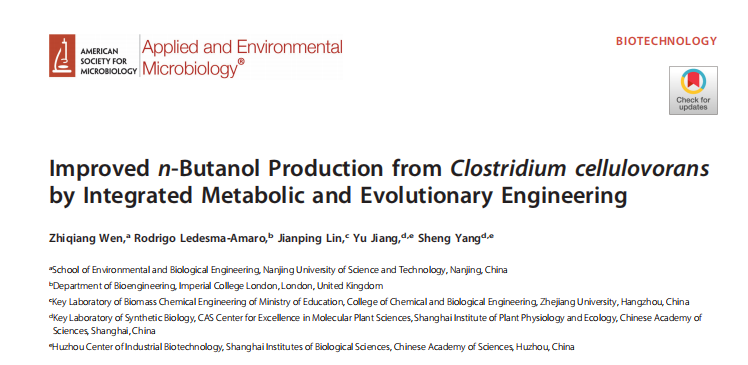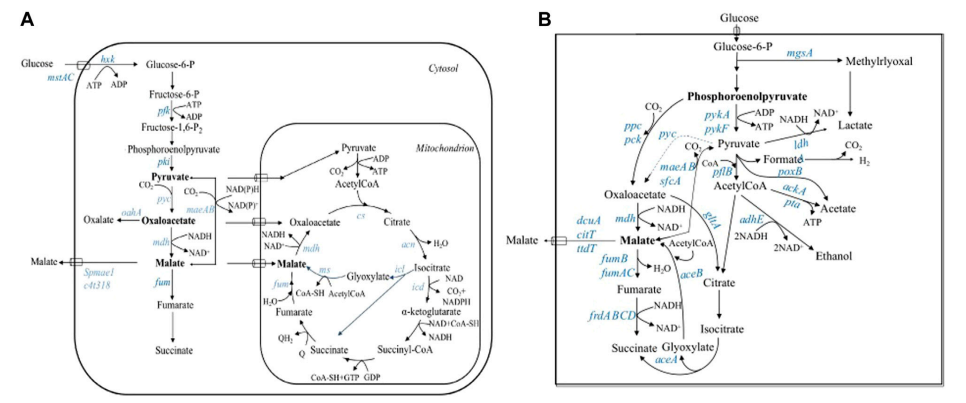Research background
Lutein is a key carotenoid pigment used in plant photosynthesis, and it is also crucial for maintaining human health. For example, lutein has a protective effect on the eyes and also has antioxidant properties, inhibiting the damage of oxygen free radicals to cells.
However, due to the abundance of related coding genes, there have been few studies using heterologous hosts (such as Escherichia coli) to study their metabolic pathways. Researchers achieved high yield of lutein by integrating upstream genes that can effectively increase carotenoid content into the genome of Escherichia coli JM101 (DE3) and inserting plasmids containing multiple genes into the genome of the strain. This article provides a basic reference for the large-scale production of lutein by microorganisms in the future.
Research process
Previous studies by researchers have successfully synthesized lutein in transgenic Escherichia coli, which has three plasmids: pACHP Lyc, pETDMpLCYb/MpLCYe, and pRSF MpBHY/MpCYP97C. However, the yield of lutein is relatively low. To improve its yield, researchers further investigated the factors affecting lutein production by attempting to rearrange these plasmids. (Figure 1)
picture

Figure 1 Lutein biosynthesis pathway in recombinant Escherichia coli
Firstly, researchers studied lycopene β The activity of cyclizing enzymes (LCYbs). Researchers constructed plasmids pAC-HIEBIA-MpLCYe or pAC-HIEBIMpLCYe-A and transformed them into Escherichia coli, but found that CruA could not convert δ- Carotenoids are converted into α- Carotenoids. Through similar experiments, it was found that both CrtYm and CruA do not react with plant lycopene ε Production of cyclooxygenase (LCYe) α- Carotenoids. In order to balance LCYb and LCYe activities, researchers attempted to regulate MpLCYb activity. Due to the presence of TPs affecting their activity in Escherichia coli, researchers removed the predicted TPs from the coding region of MpLCYb (MpLCYb ∆ TP) and constructed the plasmid pAC-HIEBI-MpLCYb ∆ TP MpLCYe-Z. By comparing the reduction of byproduct zeaxanthin, it was found that MpLCYb ∆ TP is the most suitable precursor for the production of lutein, zeaxanthin.
Secondly, researchers investigated LCYe (lycopene) ε- Screening for cyclizing enzymes. Researchers hoped to find LcYe with stronger activity, so they detected LsLCYe in lettuce and TeLCYe in tapeworm. However, although LsLcYe exhibits high activity in lettuce, it is not expressed in Escherichia coli. The reason is that the combination of LsLCYe and MpLCYb cannot work well together. The researchers further attempted to express LsLCYb in Escherichia coli, but its activity was still significantly weaker than MpLCYb. So, in the Escherichia coli system, a combination of MpLCYb and MpLCYe is chosen.
Subsequently, the researchers screened the CYP97C gene and added the MpLCYe gene. By introducing the CYP97C gene from other plants and bacteria, it was found that the lowest peak of zeaxanthin was observed in Escherichia coli carrying pUCMpCYP97C. In order to add the MpLCYe gene and reduce the number of plasmids, researchers constructed plasmids CDF MpCYP97C MpLCYe. At this time, the production of lutein in in Escherichia coli carrying the plasmid and pRK-HIEBI-MpLCYb ∆ TP MpLCYe-Z is approximately 1.0 mg/L.
After screening for genes related to the direct synthesis of lutein, the researchers enhanced the upper pathway. Multiple strategies were employed to enhance the upper pathway by integrating the IDI gene into the manXYZ region of Escherichia coli chromosomes, adding the crtE gene, chromosome integration, and plasmid insertion into the valproic acid (MVA) pathway.
Finally, the researchers optimized the conditions for lutein biosynthesis fermentation by testing temperature, pressure, and strain. (Figure 2) Finally, at 25 ◦ C, 0.2 mM, strain 2 (pRK-HIEBI-MpLCYb ∆ TP MpLCYe Z-EPg+pAC Mev/Scidi/Acl/pnbA+CDF MpCYP97C MpLCYe/JM101 (DE3)) produced the highest yield. In addition, it was found that the addition of FeCl3 maximized the yield of lutein, resulting in a yield of 11.0 mg/L

Figure 2 Comparison of Fermentation Condition Optimization
Research conclusion
The researchers increased the yield of lutein from 0.1mg/L to 11mg/L by plasmid recombination, screening suitable genes, enhancing upstream pathways, and optimizing fermentation conditions. Moreover, the lutein produced by Escherichia coli in this experiment is almost present in free form, while most lutein in other plants is esterified, indicating that the lutein obtained from E. coli through metabolic pathway engineering and genetic engineering modification may be beneficial for purification and commercialization. At the same time, the research approach of this experiment also provides a reference for the study of synthetic biology or microbial fermentation.
Reference:
Miho Takemura, Akiko Kubo, Asuka Watanabe, Hanayo Sakuno, Yuka Minobe, Takehiko Sahara, Masahiro Murata, Michihiro Araki, Hisashi Harada, Yoshinobu Terada, Katsura Yaoi, Kohji Ohdan, Norihiko Misawa, Pathway engineering for high-yield production of lutein in Escherichia coli, Synthetic Biology, Volume 6. Issue 1, 2021, ysab012, https://doi.org/10.1093/synbio/ysab012









